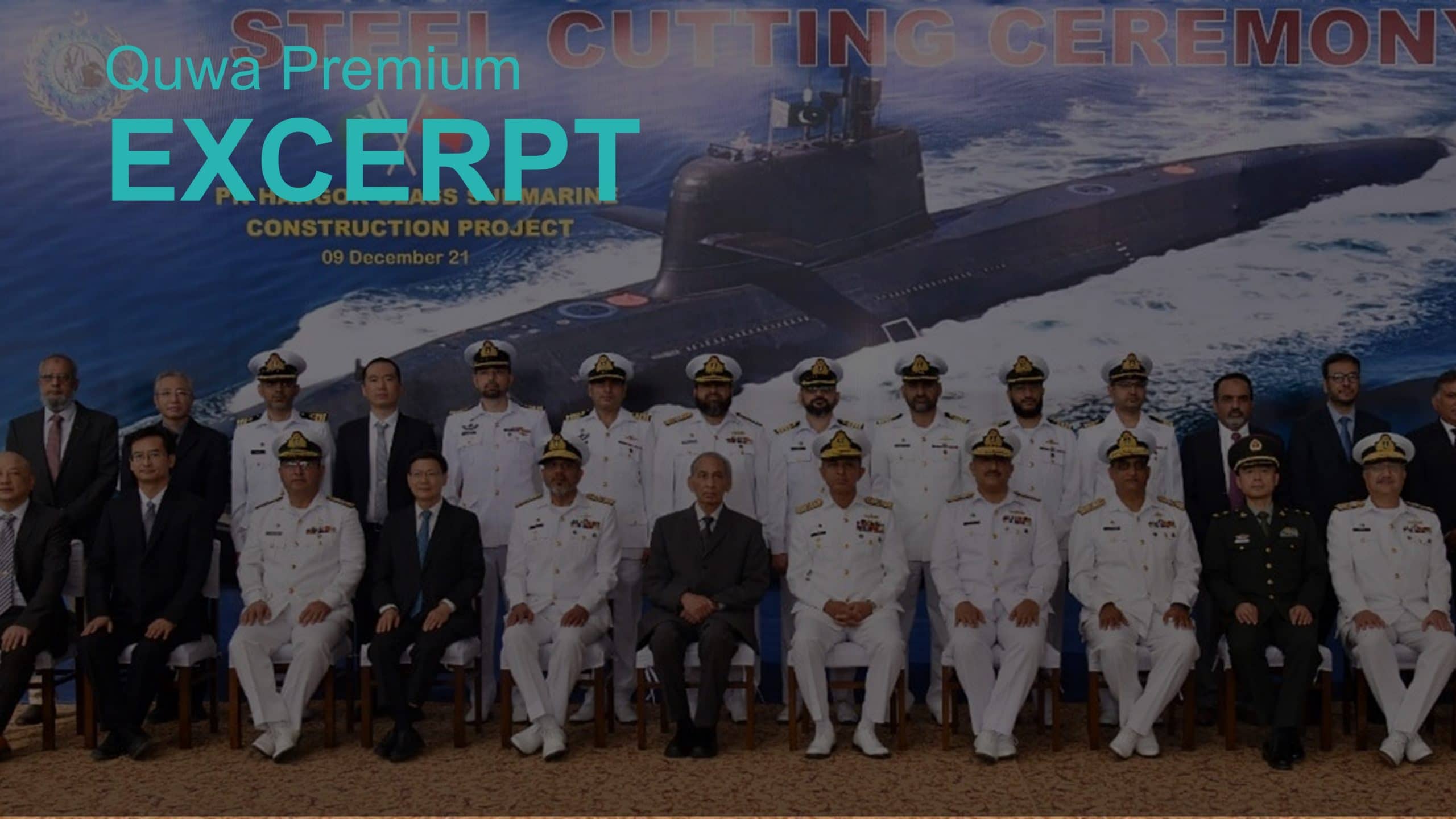2432Views

Pakistan’s KSEW Cuts Steel of Fifth Hangor Submarine
On 09 December 2021, Karachi Shipyards & Engineering Works (KSEW) cut the steel of the fifth Hangor-class submarine for the Pakistan Navy (PN).
Pakistan bought eight Hangor submarines from China Shipbuilding & Offshore International Co. Ltd (CSOC) in 2015. Under the contract, KSEW would manufacture four of the boats, while China will supply the rest.
Collectively, the PN is slated to receive the eight Hangor-class submarines from 2022 to 2028. The Chinese-built boats will arrive first, while the final KSEW-built submarine is due for completion by 2028.
Named in honour of the original PNS Hangor (which sank the Indian Navy frigate INS Khukri in the 1971 War), the Hangor-class is the centerpiece of the PN’s submarine modernization program. Similar in scope to the surface warship acquisitions, the PN is aiming to both revitalize and expand its sub-surface fleet.
Currently, the PN operates three Agosta 90B air-independent propulsion (AIP)-equipped submarines (SSP) and two Agosta 70 diesel-electric submarines (SSK). Previously, the PN also operated four Daphne SSKs, which it acquired in the late 1960s, but it has retired these boats. With the Hangor SSPs, the PN will have a fleet of 11 AIP-equipped boats, which is a relatively significant jump in numbers and capabilities.
Based on the information available, it seems that the Hangor is a variant of CSOC’s S26, an export-centric design that draws on the Type 039A/041 Yuan-class submarine.
The clearest connection between the two programs came from the previous PN Chief of Naval Staff (CNS), Admiral Zafar Mahmoud Abbasi, who said that the PN will get a Yuan-class submarine from the People’s Liberation Army Navy (PLAN) fleet for training and acclimation purposes.
Like the Yuan-class, the S26 uses a Stirling-based AIP system. However, compared to the standard S26, the Hangor has several differences. It is shorter (76 m to the S26’s 77.7 m) and has a heavier displacement (2,800 tons to the S26’s 2,550 tons). The reasons for these differences are not publicly known. Otherwise, the Hangor seems to be similar to the S26 and Yuan-class, especially in terms of armament load (through six 533 mm torpedo tubes) and general design approach.
One other interesting aspect of the Hangor program is that neither CSOC nor the PN are publicizing the Chinese-produced boats. To date, there have been no reports of steel-cutting ceremonies or other major milestones. It is unclear why there is such secrecy over the Pakistani program. Interestingly, this is not the case with Thailand’s S26T acquisition – China has been covering its milestones as normally would.
The PN did not disclose how it will configure the Hangor submarines in terms of sensors and other critical subsystems. Given its approach to surface warships and maritime patrol aircraft, the PN has been open to custom project work. It could, theoretically, look to equip the Hangor along similar lines to the upgraded Agosta 90B so as to leverage commonality in training, integration, and maintenance. However, the PN has also focused on controlling cost and mitigating risk. Like the Type 054A/P, it probably opted for available Chinese subsystems, weapons, and other inputs for the Hangor.
End of excerpt (497, 1,168 words)
You can read the complete article by logging in (click here) or subscribing to Quwa Premium (click here).
For more coverage on the Pakistan Navy, check out:
- Pakistan Navy Officially Launches P-3C Replacement Program
- Jinnah-Class Frigate Design Revealed
- Pakistan’s First Babur-Class (MILGEM) Corvette Launched
- Pakistan Navy Reportedly Launch Customer of CAMM-ER SAM
- New Pakistan Navy Chief Outlines Plans for Shallow-Water Attack Submarines
- Pakistan Navy Sets Goal for 50-Ship Navy


